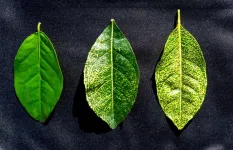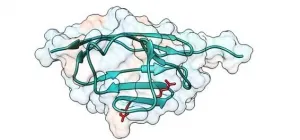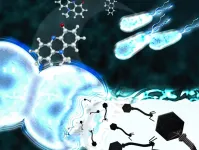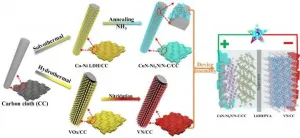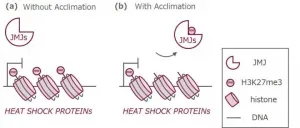Sealed, signed and delivered
Hebrew University archaeologists unveil 7,000-year-old seal impressions used for commerce and protection of property
2021-06-10
(Press-News.org) A team of archaeologists from the Hebrew University of Jerusalem (HU) made a rare discovery when they unearthed a small clay seal impression dating back some 7000 years. The impression, with two different geometric stamps imprinted on it, was discovered in Tel Tsaf, a prehistoric village located in Israel's Beit She'an Valley up north.
The discovery was made as part of a dig that took place between 2004 and 2007 and was led by HU's Professor Yosef Garfinkel along with two of his students, Professor David Ben Shlomo and Dr. Michael Freikman, both of whom are now researchers at Ariel University. One hundred and fifty clay sealings were originally found at the site, with one being particularly rare and of distinct, historic importance. The object was published in the journal Levant.
Sealings, also known as bulla, are made of a small piece of clay were used in historical times to seal and sign letters and to prevent others from reading their contents. The sealing found in Tel Tsaf is particularly significant because it is the first evidence of the use of seals to mark shipments or to close silos or barns. When a barn door was opened, its seal impression would break - a telltale sign that someone had been there and that the contents inside had been touched or taken. "Even today, similar types of sealing are used to prevent tampering and theft," explained Garfinkel. "It turns out that this was already in use 7,000 years ago by land owners and local administrators to protect their property."
Measuring less than a centimeter wide, the fragment was found in great condition due to the dry climate of the Beit She'an valley. The sealing is marked by symmetrical lines. While many sealings found in First Temple Jerusalem (ca. 2,600 years ago) include a personal name and sometimes biblical figures, the sealing from Tel Tsaf is from a prehistoric era, when writing was not yet in use. Those seals were decorated with geometric shapes instead of letters. The fact that there are two different stamps on the seal impression may indicate a form of commercial activity where the two different people were involved in the transaction.
The found fragment underwent extensive analysis before researchers could determine that it was indeed a seal impression. According to Garfinkel, this is the earliest evidence that seals were used in Israel approximately 7,000 years ago to sign deliveries and keep store rooms closed. While seals have been found in that region dating back to 8,500 years ago, seal impressions from that time have not been found.
Based on a careful scientific analysis of the sealing's clay, the researchers found it wasn't locally sourced but came from a location at least ten kilometers away. Other archeological finds at the site reveal evidence that the Tel Tsaf residents were in contact with populations far beyond ancient Israel. "At this very site we have evidence of contact with peoples from Mesopotamia, Turkey, Egypt and Caucasia," Garfinkel added. "There is no prehistoric site anywhere in the Middle East that reveals evidence of such long-distance trade in exotic items as what we found at this particular site."
The site also yielded clues that the area was home to people of considerable wealth who built up large stores of ingredients and materials, indicating considerable social development. This evidence points to Tel Tsaf as having been a key position in the region that served both local communities and people passing through. "We hope that continued excavations at Tel Tsaf and other places from the same time period will yield additional evidence to help us understand the impact of a regional authority in the southern Levant," concluded Garfinkel.
INFORMATION:
[Attachments] See images for this press release:
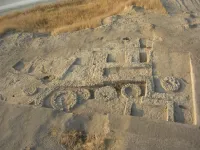
ELSE PRESS RELEASES FROM THIS DATE:
2021-06-10
LA JOLLA--(June 10, 2021) In order for cancer to grow and spread, it has to evade detection by our immune cells, particularly specialized "killer" T cells. Salk researchers led by Professor Susan Kaech have found that the environment inside tumors (the tumor microenvironment) contains an abundance of oxidized fat molecules, which, when ingested by the killer T cells, suppresses their ability to kill cancer cells. In a vicious cycle, those T cells, in need of energy, increase the level of a cellular fat transporter, CD36, that unfortunately saturates them with even more oxidized fat and further curtails their anti-tumor functions.
The discovery, published online in Immunity on June 7, 2021, suggests new pathways for safeguarding the immune system's ...
2021-06-10
Scientists are hoping the RNA of an obscure infection can one day be used like a Trojan horse to deliver life-saving treatments to citrus trees.
The infection, citrus yellow vein disease, was discovered 64 years ago in Riverside and has never been seen elsewhere in the world. Decades later, UC Riverside researchers have finally unraveled the associated pathogen's genetic codes -- a significant step toward harnessing its unique properties.
A paper describing this work was published recently in the journal Frontiers in Microbiology. It opens the door to testing whether this apparently ...
2021-06-10
Scientists at the Centro Nacional de Investigaciones Cardiovasculares (CNIC) have described a potential disease-causing mechanism in hypertrophic cardiomyopathy (HCM), the most frequent hereditary disease of the heart. The study, published in the journal ACS Nano, provides the first description of an association between this disease and mechanical alterations to a component of the contractile machinery of the heart.
The heart muscle is under constant mechanical stress throughout life as it contracts to pump blood to the body. The laboratory led by Dr. Jorge Alegre-Cebollada investigates how the mechanical properties of the cardiac proteins determine the physiological behavior of this muscle and how alterations to these properties lead to the appearance of diseases like ...
2021-06-10
This targeted control of phages provides entirely new biotechnological and therapeutic approaches, e.g. for phage therapies. The results produced in the context of an ERC grant have been published in the Journal of the American Chemical Society.
The human body and its microbiota harbour a large amount of phages. These infect bacteria as virus particles to ensure their own survival. One of their strategies is to integrate into the bacterial genome and multiply via bacterial cell division. However, external signal molecules can trigger the phages' sudden awakening from their dormant ...
2021-06-10
Imagine you're a fisherman living by a lake with a rowboat. Every day, you row out on the calm waters and life is good. But then your family grows, and you need more fish, so you go to the nearby river. Then, you realize you go farther and faster on the river. You can't take your little rowboat out there - it's not built for those currents. So, you learn everything you can about how rivers work and build a better boat. Life is good again...until you realize you need to go farther still, out on the ocean. But ocean rules are nothing like river rules. Now you have to learn how ocean currents work, and then ...
2021-06-10
DARIEN, IL - Findings from a recent study show that patients with untreated, moderate to severe obstructive sleep apnea had a higher risk of experiencing a cardiovascular event, but the risk of incident heart problems was decreased in those who used CPAP therapy.
Results show that people with moderate to severe sleep apnea and no record of CPAP use were 71% more likely than those without sleep apnea to experience incident myocardial infarction, stroke, unstable angina, heart failure or cardiovascular death. Compared with the risk of heart problems in people with untreated sleep apnea, the risk of experiencing a cardiovascular event was 32% lower ...
2021-06-10
ITHACA, N.Y. - The Noceto Vasca Votiva is a unique wood structure that was unearthed on a small hill in northern Italy in 2005. Built primarily of oak and slightly larger than a backyard swimming pool, the exact purpose of the in-ground structure has remained a mystery, as has the date of its construction. Italian researchers estimated its origins go back to the late Middle Bronze Age, sometime between 1600 and 1300 B.C.
While that gap might not seem huge, in archeological terms it's like comparing the culture that invented the steam engine with the one that produced the iPad.
A Cornell University team led by Sturt Manning, Distinguished ...
2021-06-10
Fast radio bursts, or FRBs, blaze for a few milliseconds before vanishing without a trace. Their origins are unknown, and their appearance is unpredictable. In the decade following their discovery in 2007, only 140 FRBs had been seen. Now, thanks to the launch of a large stationary telescope in the interior of British Columbia in 2018, the number of new FRBs detected has almost quadrupled - for a total of 535. Moreover, the Canadian Hydrogen Intensity Mapping Experiment (CHIME/FRB), a McGill-led inter-university collaboration, has put together the first CHIME/FRB catalogue, which will be presented this week at the American Astronomical Society Meeting.
CHIME is unique in that ...
2021-06-10
Recently, a research team led by Prof. ZHAO Bangchuan from the Institute of Solid Materials of the Hefei Institutes of Physical Science (HFIPS) synthesized 3D porous honeycomb-like CoN-Ni3N/N-C nanosheets and vanadium nitride (VN) nanobelt arrays via in-situ growth method, respectively, and constructed a high-energy-density flexible supercapacitor device. The result has been published in Advanced Functional Materials.
Transition metal nitrides (TMNs) are potential electrode materials for high-performance energy storage devices, but the structural instability severely hinders their application. Therefore ...
2021-06-10
Ikoma, Japan - "If you can't stand the heat, get out of the kitchen," as the old saying goes. But for organisms that can't leave the proverbial kitchen when things get too hot, there's another way: researchers from Japan have discovered that plants can gain heat tolerance to better adapt to future heat stress, thanks to a particular mechanism for heat stress 'memory'.
In a study published in Nature Communications, researchers from Nara Institute of Science and Technology have revealed that a family of proteins that control small heat shock genes enables plants to 'remember' how to deal with heat stress.
Climate change, especially global warming, is a growing threat to agriculture ...
LAST 30 PRESS RELEASES:
[Press-News.org] Sealed, signed and delivered
Hebrew University archaeologists unveil 7,000-year-old seal impressions used for commerce and protection of property

